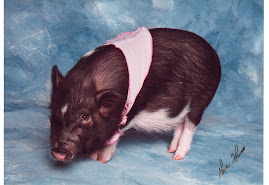
Well we have had this irish whistle laying around the house here and there for a year now! Today was the day the girls found it interesting to pick it up and study it--the holes, where it came from and how to play it! It was cool that they googled the whistle and found it was also called the tin whistle...then we found the tutor book that came with the whistle and it said so on the cover...pretty cool.. and we really never noticed sooner!
Here is the info Adrienne found on the whistle--quoted from the BBC h2g2 website:
The tin whistle is a simple, traditional instrument, which is popular in Ireland. It is easy to play and produces a good loud sound, although it can be ear-piercing in the higher notes. It is sometimes known as a penny whistle or a flageolet.
The tin whistle has six finger holes on the front and no holes on the back. If your instrument has any other arrangement of holes, it is not a tin whistle!
The ancestor of the modern tin whistle was an instrument called the flageolet. Made of wood with brass keys, it was popular in France in the 16th Century. It had four holes on the front and two on the back. It came to England in the 18th Century and was modified slightly, putting all six holes along the front. Eventually it got to Ireland. By this stage, it had changed to its modern form; a metal instrument without keys.
There are two main types of tin whistle. The first is made from thin metal with a wooden block set into one end to make the mouthpiece. It tapers so that the end furthest from the mouth is narrower than at the mouthpiece end. Clarke is the main maker of this type.
The other sort is more common and consists of a cylindrical tube with a plastic head. For many years, the 'Generation' was the standard in this type, but recently, a number of other companies such as 'Feadóg' have started making whistles of the same design.
Choosing a Tin Whistle
Tin whistles come in a number of different sizes for playing in different keys. Choose one in the key of D as this is the usual model for traditional music.
Tin whistles come in a number of different sizes for playing in different keys. Choose one in the key of D as this is the usual model for traditional music.
We have the latter one (Feadog), as you can see in pic we took of ours that we own. It's neat--It came with the Tutor book and the CD. We are playing around learning songs on it. It would be fun by the end of the day to see who has learned a full song! :0)
Enjoy!







No comments:
Post a Comment